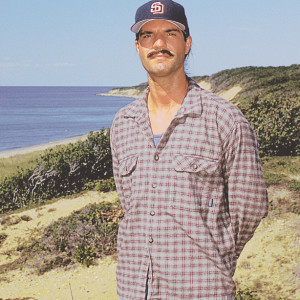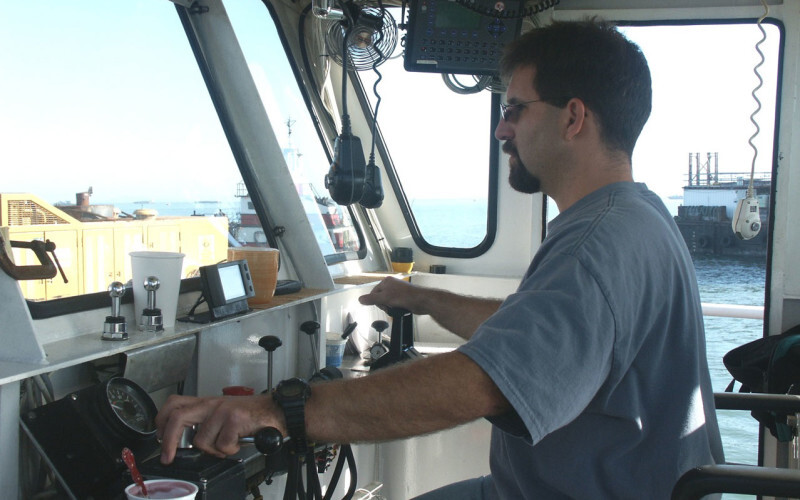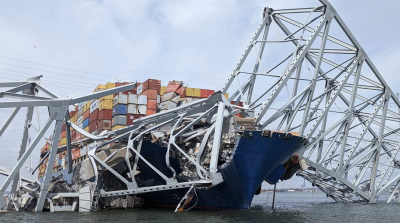In this final installment on assist work I’m going to focus on restraint. On the idea that the throttles very seldom need to be in the corner. You don’t need to always “roll the coal.” Belching big clouds of smoke, huge bursts of quick-water, singing and popping lines, and a wildly vibrating tug are all signs of poor planning and that horsepower was substituted for skill. Less is often more.
By that I mean that I generally try to use the least amount of everything (speed, power, rudder) to get the job done. An assist boat with a line up and making no turns acts as a significant drag on a light barge. Positioned with care and foresight, it’s frequently about 80% or more of what you really need: that predictable drag on the barge to prevent the wind from overpowering and working you, allowing you to keep it all under firm control and land it smoothly, with minimal drama, even when operating in gnarly conditions.
With the assist tug rolling out onto a 99 (perpendicular to the hull) and pinning the barge only right at the end of the maneuver, it can easily appear to those who just don’t have the experience to understand it that the assist wasn’t really necessary at all. But appearances are deceiving. It wasn’t a lot of power that was required, mostly just the weight. As much as possible, use all of the elements, along with geometry and physics, to your full advantage. Making a complex, dynamic maneuver look simple, easy and boring is the magic trick to master. Again, less is usually more.
Consistently practicing real, effective restraint when power is always at hand and abundant isn’t easy. Trying to teach it to others can seem a fool’s errand. It is, in fact, contrary to human nature, as any trip on a highway will soon prove conclusively. When we have something, we tend to use it, and thoroughly abuse it, even when doing so causes far more harm than good.
And so it goes….





